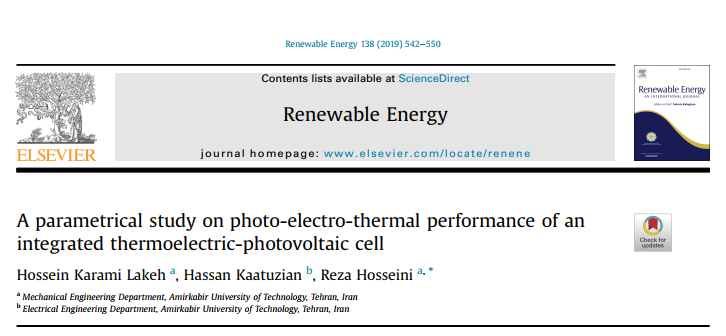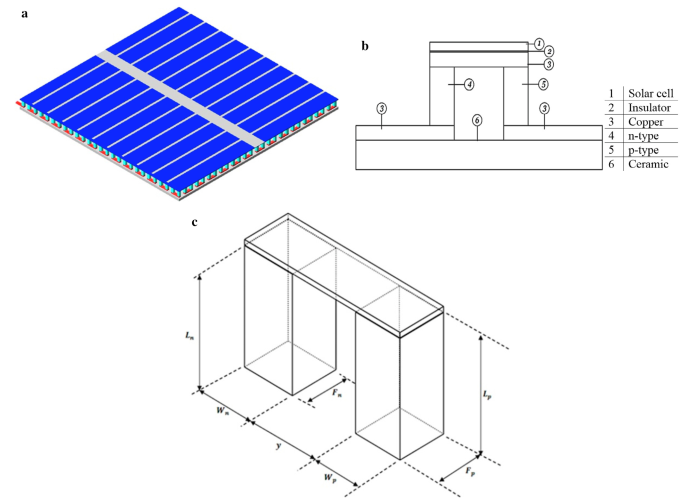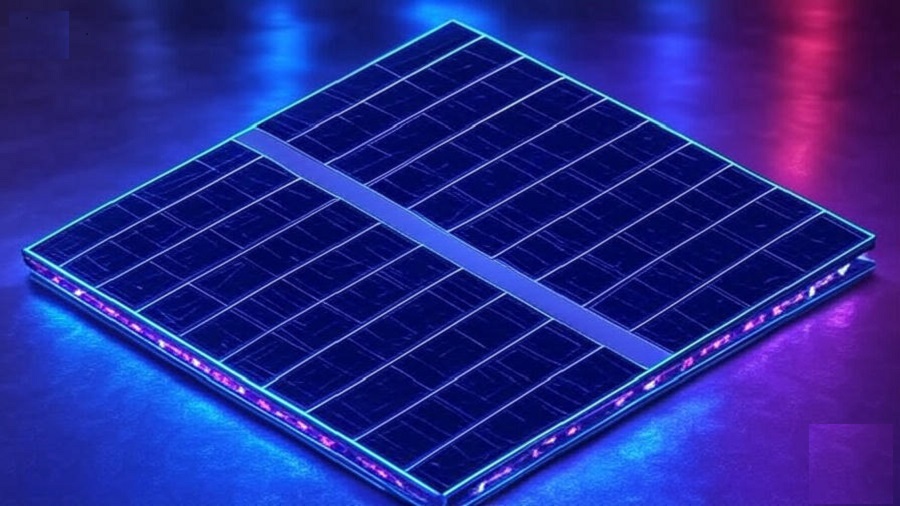- Why Heat is a Problem for Solar Panels
- My Research: The Integrated TE-PV Cell
- Key Takeaways from Our Research
- What’s Next for the Integrated Thermophotovoltaic Cell?
- FAQ
- What is an integrated thermophotovoltaic cell?
- How an integrated thermophotovoltaic cell works?
Solar energy is one of the most promising solutions for a sustainable future, but there’s one big problem—heat buildup.
If you’ve ever touched a solar panel on a sunny day, you know how hot it can get. Unfortunately, that heat isn’t just uncomfortable; it actually reduces the panel’s efficiency.
That’s exactly what led me to explore a game-changing innovation in our recent research which was done at Tehran Polytechnic: integrating a thermoelectric generator (TEG) directly into a photovoltaic (PV) cell.
Why Heat is a Problem for Solar Panels
First, let’s answer why we did this project.
As you know, solar panels generate electricity by converting sunlight into energy. However, as they absorb sunlight, they also absorb heat. This extra heat lowers the efficiency of the PV cells, reducing their power output. Several cooling solutions exist, like air and water-based cooling systems, but they have their own drawbacks.
That’s where thermoelectric generators come in. TEGs can convert heat into electricity, turning an inefficiency into an opportunity.
However, simply attaching a TEG to the back of a solar panel isn’t enough. Our research focused on fully integrating the two technologies into a single, seamless unit for maximum performance.
My Research: The Integrated TE-PV Cell

In our study, we developed and tested an integrated thermoelectric-photovoltaic (TE-PV) cell—a next-generation solar technology that merges TEGs and PV cells into one efficient unit.
Unlike conventional hybrid models that place TEGs as an add-on, this integrated design eliminates energy loss caused by gaps and extra layers, leading to better overall performance.
To understand the full potential of this technology, we created a detailed mathematical model and ran simulations to optimize key parameters like material properties, load resistance, and physical structure.
Key Takeaways from Our Research

Here are some highlights of our research:
- More Energy Output – The integrated TE-PV cell produced significantly more electricity compared to a standard solar panel. The TEG effectively converted excess heat into additional power, improving efficiency.
- Optimized Design for Maximum Performance – I identified the best combination of materials, number of thermoelectric couples, and structural parameters to ensure maximum energy generation.
- Versatile Applications – This technology is particularly promising for space applications, where temperature fluctuations are extreme, and for solar collectors, where maximizing power generation is essential.
- Cost-Effective and Scalable – Because this design integrates both technologies into a single unit, it eliminates unnecessary materials, lowers production costs, and simplifies manufacturing. This makes it a practical solution for large-scale adoption.
What’s Next for the Integrated Thermophotovoltaic Cell?
This research is just the beginning. With further refinement and real-world testing, integrated TE-PV cells could reshape the solar energy industry. The ability to capture both sunlight and heat in a single device means we can squeeze more energy out of every ray of sunshine.
At RenWaves, I’m committed to exploring cutting-edge renewable energy solutions, and this study is just one of many exciting developments on the horizon. If you’re as passionate about solar energy as I am, stay tuned for more updates!
Let’s start a conversation—what do you think about the future of the integrated thermophotovoltaic cell? Drop a comment below and help RenWaves to improve the device!
FAQ
What is an integrated thermophotovoltaic cell?
It’s a new design that integrates solar cells with thermoelectric generators to achieve higher efficiency energy generation.
How an integrated thermophotovoltaic cell works?
Integrating thermoelectric generators (TEGs) with photovoltaic cells (PVs) enhances solar energy efficiency and provides extra power. Recent research on a novel TE-PV cell modeled factors like ambient conditions and load resistance, revealing that output power depends on key characteristics such as material properties and TEG configuration. This integrated device is especially effective in applications involving solar collectors and extreme outer space conditions.
I am an engineer with a focus on renewable energy technologies. I hold a master’s degree in mechanical engineering and my research centered on thermo-photovoltaic systems. Over the years, I have contributed to several ISI journals, international conferences, and valid websites, sharing my insights on sustainable energy solutions. I am passionate about advancing energy-efficient technologies to help create a more sustainable future.

